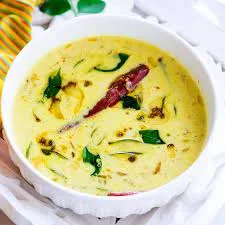Kerala cuisine is known for
its use of fresh, flavorful ingredients and spices. However, it is important to
note that some Kerala dishes can be high in sugar, especially those that use
coconut milk or jaggery (unrefined cane sugar).
Here are some Kerala-style
foods that are good for controlling blood sugar:
Breakfast:

Oats upma: This savory
porridge is made with oats, vegetables, and spices. It is a good source of
fiber and complex carbohydrates, which can help to regulate blood sugar levels.
Ragi dosa: This type of dosa
is made with ragi flour, which is a low-glycemic index food. This means that it
does not cause a rapid spike in blood sugar levels.
Brown rice idli: Idli is a
steamed cake made from fermented rice and lentil batter. Brown rice is a healthier
option than white rice because it is a whole grain and contains more fiber.
Lunch and dinner:
Fish curry with brown rice:
Fish is a good source of protein and omega-3 fatty acids, which are beneficial
for people with diabetes. Brown rice is a healthier option than white rice
because it is a whole grain and contains more fiber.
Vegetable stew with chapatis:
Vegetable stew is a good way to get a variety of nutrients, including vitamins,
minerals, and fiber. Chapatis made with whole-wheat flour are a healthier
option than white bread.
Lentil soup with brown rice:
Lentil soup is a good source of protein and fiber. Brown rice is a healthier
option than white rice because it is a whole grain and contains more fiber.
Snacks:
Nuts: Nuts are a good source
of protein, fiber, and healthy fats. They can help to keep you feeling full and
satisfied between meals.
Fruits: Fruits are a good
source of vitamins, minerals, and fiber. They can also help to satisfy your
sweet tooth without causing a rapid spike in blood sugar levels.
It is important to note that
even healthy foods can contain sugar. Therefore, it is important to read food
labels carefully and be mindful of the portion sizes you eat.
Here are some additional tips
for controlling blood sugar with Kerala-style food:
- Use fresh, whole ingredients
whenever possible.
- Limit your intake of processed
foods and sugary drinks.
- Choose healthy cooking
methods, such as grilling, baking, and steaming.
- Eat smaller, more frequent
meals throughout the day.
- Include a variety of foods
from all food groups in your diet.
If you have diabetes or
prediabetes, it is important to talk to your doctor or a registered dietitian
about creating a meal plan that is right for you.
Ragi Dosa recipe
Ingredients
- 1 cup ragi flour
- 1 cup rice flour
- 1/2 cup curd
- 1/2 teaspoon salt
- Water, as needed
Instructions
Rinse the ragi flour and rice
flour in a colander until the water runs clear.
In a large bowl, combine the
ragi flour, rice flour, curd, and salt.
Add water, a little at a time,
stirring constantly until the batter reaches a pouring consistency. The batter
should be thin enough to spread easily on a hot griddle, but thick enough to
hold its shape.
Cover the batter and let it
rest for at least 30 minutes, or up to overnight.
Heat a griddle or skillet over
medium heat.
Pour a ladleful of batter onto
the hot griddle and spread it out into a thin circle.
Cook the dosa for about 2-3
minutes per side, or until golden brown and crispy.
Serve hot with your favorite
chutney or sambar.
Tips
For a more flavorful dosa, add
some chopped onion, ginger, or green chilies to the batter.
If the batter is too thick,
add a little more water until it reaches the desired consistency.
If the dosa is sticking to the
griddle, add a little oil or butter to the pan.
Variations
Moong dal ragi dosa: Add 1/2
cup moong dal to the batter. Soak the dal for 30 minutes before grinding it
into a fine paste.
Sambar ragi dosa: Add 1/2 cup
cooked sambar to the batter.
Pesarattu: This is a type of
ragi dosa that is made with a fermented batter. To make a fermented batter,
soak the ragi flour and rice flour in water for 8 hours. Drain the water and
grind the ragi flour and rice flour into a fine paste. Add water, a little at a
time, stirring constantly until the batter reaches a pouring consistency. Cover
the batter and let it ferment in a warm place for 6-8 hours, or until it has
doubled in size.
Nutritional information
- One serving of ragi dosa
(approximately 1/2 cup) provides the following nutrients:
- Calories: 120
- Fat: 2 grams
- Carbohydrates: 22 grams
- Protein: 4 grams
- Fiber: 2 grams
Ragi dosa is a healthy and
nutritious option for breakfast or a snack. It is a good source of fiber, which
can help to regulate digestion and keep you feeling full. Ragi dosa is also a
good source of protein, which is important for building and repairing muscle
tissue.











